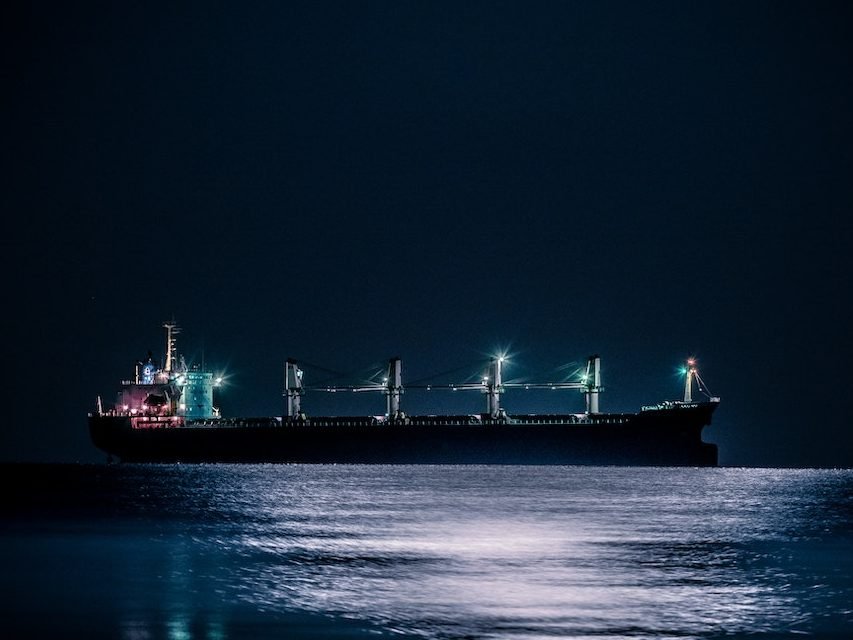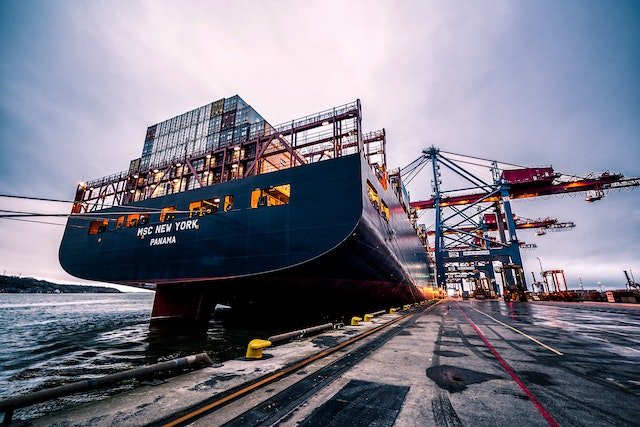Introduction.
Marine electrical system play a vital role in the world of maritime. Providing the lifeblood of power and functionality to boats and ships of all sizes. These intricate networks of wires, circuits and components enable vessels to navigate treacherous waters, access resources and maintain safety at sea.
In this exploration, we delve into the fascinating realm beneath the ocean’s surface where the principles of electricity converge with maritime technology. From the fundamentals of electrical circuits to the latest advancements in sustainable energy solutions and smart monitoring systems. Marine electrical system are at the forefront of maritime innovation shaping a cleaner more efficient and safer future for seafarers worldwide.
The Vital Role of Marine Electrical System.
Imagine this: the glowing lights on a ship cutting through the dark night, the soothing sound of the engines moving the ship forward and the complex network of wires and circuits making it all work perfectly. Let’s explore the important parts of this system and how they make everything run smoothly.
Why We’re Exploring Marine Electrical System?
What makes us want to explore the thrilling world under the ocean? Marine electrical system have more to offer than just convenience. They help us in many ways, such as allowing us to discover amazing underwater environments, find resources and stay safe at sea. Here we’ll learn about the benefits and the incredible things marine electrical systems can do as we endeavor into the deep sea.
The Basics of Marine Electrical System.
There’s a complicated network of wires and electrical stuff that makes the whole boat work that hidden below the decks and walls of every boat. This electricity does things like lighting up the boat and making it move through the water. Let’s see about the basics of these electrical systems that power boats and ships.
The Building Blocks: Understanding Electrical Circuits.
Think of marine electrical systems like a big city with lots of roads where electrical circuits are like the roads that let electricity flow smoothly. They are like a loop where tiny particles called electrons travel from a power source to different parts of a boat and then come back. So, electrical circuits make sure that power goes everywhere on the boat, just like roads in a city help people get to different places.
The Fundamentals of Marine Electrical System.
To understand marine electrical system, we need to know about three key things; voltage, current, and resistance.
Voltage: In electricity, it’s the force that pushes electrons to move.
Current: Current measures how many electrons are actually flowing through a wire. Current measure it in units called amperes.
Resistance: Resistance is like an obstacle in the path of flowing electrons. The symbol Ω to represent resistance.
So, voltage pushes electrons, current shows how many are moving and resistance resists their flow. These concepts are important in marine electrical systems.
AC vs. DC: What Sets Marine Systems Apart?
There are two main types of electricity: AC and DC. AC goes back and forth in a regular pattern and is good for sending power over long distances. DC keeps a steady flow of electricity and is good for things that need a stable power source. Marine electrical systems often use both AC and DC to handle different tasks because they have to deal with changing conditions at sea.
From Generator to Outlet: Power Generation and Distribution.
On ships, electrical generators take different energy sources like diesel, natural gas or even new ones like LNG and turn them into electrical power. This power then goes through the ship’s electrical system to provide electricity for various purposes.
Types of Generators Used in Marine Applications.
Generators used on boats come in different sizes and types depending on the boat’s needs. Big ships use large, powerful generators for things like moving the ship, lighting and running equipment. Smaller boats like yachts and fishing boats use smaller, efficient generators. These generators can run on diesel fuel or use eco-friendly technology like hybrid systems as the marine industry moves towards using cleaner energy.
Power Distribution Networks on Vessels.
Electrical systems on ships work like a network of power that spreads everywhere on the vessel. They use control panels, circuit breakers and switchboards to control and protect the flow of electricity.
These systems provide power for lights and other important functions. Making it possible for ships to travel all over the world. They use things like generators to create electricity and then distribute it to different parts of the ship so that everything works well on the open sea.
Navigating the Complexity: Components of Marine Electrical System.
Marine vessels have lots of complicated technology on board but two really important things are marine batteries and control panels. These things help the boat run smoothly and stay safe. Let’s see what they do, the different kinds, how to take care of them and why they matter for boats.
Marine Batteries: The Lifeblood of Onboard Power.
Marine batteries store and provide electricity for important things like starting engines, lights and electronic devices.
Types of Marine Batteries and Their Applications.
There are different kinds of marine batteries, each designed for a specific job. Starting batteries give a quick burst of power to start the boat’s engine.
Deep-cycle batteries provide steady energy for a long time like when running onboard equipment.
Dual-purpose batteries are a mix of both so they give you a balance between quick power and long-lasting energy.
Choosing the right type of battery makes sure everything on boat works smoothly from the engine to the navigation system.
Battery Maintenance.
Taking care of marine batteries is really important to make sure they work well. It means regularly checking the liquid inside them and making sure the metal parts stay clean.
Switchboards and Control Panels: The Captain’s Command Center.
In a ship’s electrical system there are control centers that help electricity move around, keep things safe and let the captain and crew control everything on the ship such as lights and navigation.
Functions and Features of Marine Control Panels.
Marine control panels are like the brains of a ship’s electrical system. They have buttons and switches that help sailors control important things on the ship. Such as the engines and electricity. These control panels are very accurate and reliable. So, the sailors can make sure everything is working well. They also have fancy features that make the ship safer and more efficient when it’s out at sea.
Ensuring Safety and Reliability in Control Systems.
In the unpredictable ocean environment, it’s really important for boats to be safe and reliable. Control systems have special features to protect against problems like shutting off power if something goes wrong and they can also keep an eye on things to make sure everything stays working well even when the sea is rough.
Lighting the Way: Marine Lighting Systems.
When the sun goes down and it gets dark on the water, special lights on boats come on to help them navigate safely. These lights include navigation lights and newer LED lights which are very energy-efficient and bright.
Navigation Lights: A Crucial Aspect of Safety.
Navigation lights on boats are like a secret code that ships use to communicate with each other at sea. These lights tell other ships important information like where they’re going, how big they are and whether they’re moving or stopped. It’s really important for everyone who works on the water to understand these lights to stay safe and avoid accidents.
LED Technology: The Energy-Efficient Revolution.
LED lights are making a big change in boat lighting. They use less energy that lasts a long time and work well in tough conditions. This is good for the environment and also helps boats save money on energy and be kinder to nature.

Powering Ahead: Advancements in Marine Electrical Systems.
The constant progress in marine electrical systems is moving ships toward a cleaner and more efficient future. Let’s look at the newest developments that are taking boats into the next stage of maritime technology.
The Green Wave: Sustainable Energy Solutions.
The shipping industry is focusing on being more environmentally friendly. One important way they’re doing this is by using cleaner energy sources to power ships instead of relying on polluting fossil fuels.
Embracing Renewable Energy Sources.
Ships are using solar panels and wind turbines to get energy from the sun and wind. This clean energy is changing how ships power their systems.
Hybrid and Electric Propulsion Systems: A Cleaner Future.
Ships are using new technology to move forward with less pollution. They’re using a mix of regular engines and electric motors. So, they can switch between them when needed. This is good for the environment and helps save fuel and reduce pollution.
Digitalization Takes the Helm: IoT and Marine Electrics.
The internet and technology are becoming important on ships like sensors and machines on boats are getting smarter and connected to the internet. This helps ships work better and be safer.
Smart Monitoring Systems for Efficient Operations.
Sensors on boats gather information about different things like how the engine is working, how much fuel is being used and what the weather is like. This information is sent to a control center on the boat. So, the crew can make smart choices, improve how the boat works and find upcoming problems early.
Predictive Maintenance: Avoiding Breakdowns at Sea.
One important use of IoT in marine electrical systems is predicting when the equipment might have problems. Smart computer programs look at data and figure out when things might break or need fixing. This helps avoid expensive breakdowns while ships are out at sea, keeping them running smoothly and safe.
Conclusion.
To sum it up, marine electrical systems are really important for boats and ships. They help power these vessels and keep them safe. It’s important to understand basic stuff like voltage, current, and resistance as well as the use of different types of electricity (AC and DC) in this context. There are some cool things happening in this field. People are working on using cleaner sources of energy like solar panels and wind turbines to make ships more efficient and eco-friendlier. They’re also using smart technology (IoT) to make ships safer for the crew and better for the environment.

